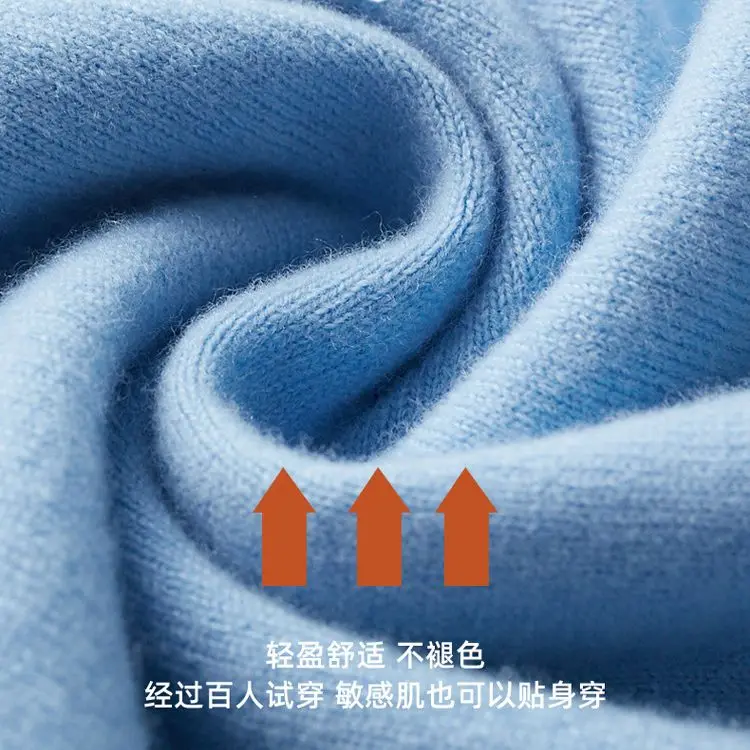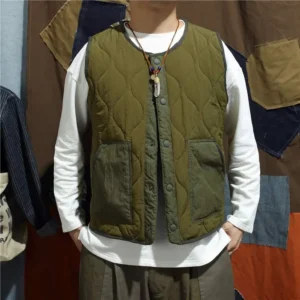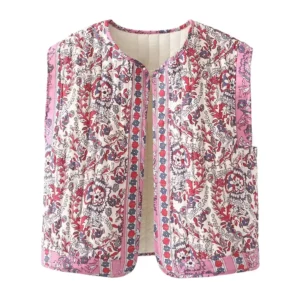Introduction: The Perfect Solution for Unpredictable Weather
Dressing for transitional seasons can feel like solving a daily puzzle. That morning chill gives way to afternoon warmth, only to cool again as evening approaches. This weather limbo between seasons demands clothing that adapts as quickly as the temperature changes.
Enter thin cashmere layers – nature’s perfect answer to the transitional weather dilemma. Unlike synthetic materials that trap heat or cotton that fails to insulate when damp, cashmere offers a remarkable ability to regulate your body temperature throughout fluctuating conditions.
What makes cashmere truly exceptional for these in-between seasons is its dual nature: providing substantial warmth without the bulk of traditional woolens. This lightweight luxury fiber creates a microclimate around your body, offering protection without overheating – exactly what unpredictable weather demands.
Throughout this guide, we’ll explore how these elegant styling tips for cashmere cardigans and other thin cashmere pieces can transform your transitional wardrobe from merely functional to exceptionally comfortable and refined. By mastering the art of lightweight cashmere layering, you’ll navigate seasonal shifts with both confidence and style.
The Remarkable Properties of Thin Cashmere for Changing Seasons
What makes thin cashmere so uniquely suited for transitional weather? The answer lies in its extraordinary natural structure and properties:
Temperature Regulation: Cashmere fibers contain a natural hollow core that traps warm air close to your body when temperatures drop. Yet unlike many insulators, these fibers also release excess heat when temperatures rise, creating the perfect microclimate against your skin.
Superior Breathability: The natural properties of cashmere allow moisture vapor to escape efficiently, preventing that clammy feeling associated with temperature fluctuations. This breathability surpasses even fine merino wool and certainly outperforms synthetic alternatives.
Lightweight Warmth: Perhaps most impressive is cashmere’s exceptional warmth-to-weight ratio. Cashmere provides up to three times more insulation than traditional wool while weighing significantly less. This makes it ideal for layering without adding bulk or restricting movement.
Incomparable Softness: With fibers measuring just 14-16 microns in diameter (compared to human hair at 75-100 microns), quality cashmere feels incredibly soft against skin. This allows for comfortable direct contact as a base layer without the itchiness associated with regular wool.
Long-Term Value: When properly cared for, thin cashmere pieces resist pilling and maintain their shape and softness for years, making them true investment pieces rather than seasonal purchases.
The science behind cashmere’s performance reveals why it’s significantly warmer than wool despite its lighter weight. The unique structure of each fiber creates natural air pockets that trap body heat more efficiently than other natural materials, while still allowing excess moisture to escape – the perfect combination for unpredictable weather.
Essential Thin Cashmere Pieces for Your Transitional Wardrobe
Building an effective transitional wardrobe begins with selecting the right foundation pieces. Here’s how to assemble a collection of cashmere sweaters and complementary pieces that work beautifully across changing seasons:
Versatile Lightweight Sweaters
The backbone of any transitional cashmere collection starts with finely knit sweaters in versatile silhouettes. These pieces work equally well on their own during milder days or as sophisticated mid-layers when temperatures drop:
- 14-gauge fine-knit sweaters offer ideal transitional weight – substantial enough to provide warmth yet thin enough to layer comfortably
- Classic crewnecks provide timeless versatility for both casual and formal settings
- V-neck cashmere sweaters create a flattering neckline that layers beautifully under jackets or over collared shirts
- Jersey knit varieties offer greater stretch and a more relaxed drape for casual settings
- Ribbed variations provide additional texture and slightly more insulation where needed
These lightweight pieces serve as perfect building blocks that can stand alone in milder weather or integrate seamlessly into more complex layered outfits as temperatures fluctuate.
Elegant Cardigans for Adaptable Layering
Cardigans represent perhaps the most functional transitional cashmere piece, functioning as both mid-layer and lightweight outerwear depending on the day’s forecast:
- Button-front styles provide classic versatility and temperature control through selective fastening
- Waterfall and open-front designs create elegant draping effects while framing other layers
- Hip-length cardigans balance proportions with pants and skirts alike
- Longer duster styles provide additional coverage and dramatic silhouettes for cooler days
The strategic use of cashmere cardigans in versatile looks allows for rapid adaptation to changing temperatures. They can be easily added or removed throughout the day, making them indispensable for transitional dressing.
Luxurious Wraps, Shawls, and Ponchos
For maximum adaptability and dramatic style, cashmere wraps and shawls offer unparalleled versatility:
- Generous dimensions allow for multiple styling options from simple shoulder drapes to fully wrapped configurations
- Perfect for travel when temperatures may vary widely throughout the day
- Easily packable for unexpected weather changes
- Transform from daytime layer to elegant evening cover with simple redraping
These statement pieces serve multiple functions beyond mere warmth, acting as both practical layer and sophisticated style element simultaneously.
Ultra-Thin Base Layers
The foundation of effective cashmere layering begins with pieces designed to sit against the skin:
- Lightweight cashmere tees weighing under 150 grams provide exceptional next-to-skin comfort
- Thin turtlenecks and mock necks protect the throat area during windy transitional days
- Sleeveless shells and tanks create a smooth foundation under other layers
- These pieces offer greater temperature regulation and moisture management than silk alternatives
The remarkable softness of fine cashmere makes these base layers comfortable for all-day wear, unlike many wool alternatives that can irritate sensitive skin.
Mastering the Art of Layering with Thin Cashmere
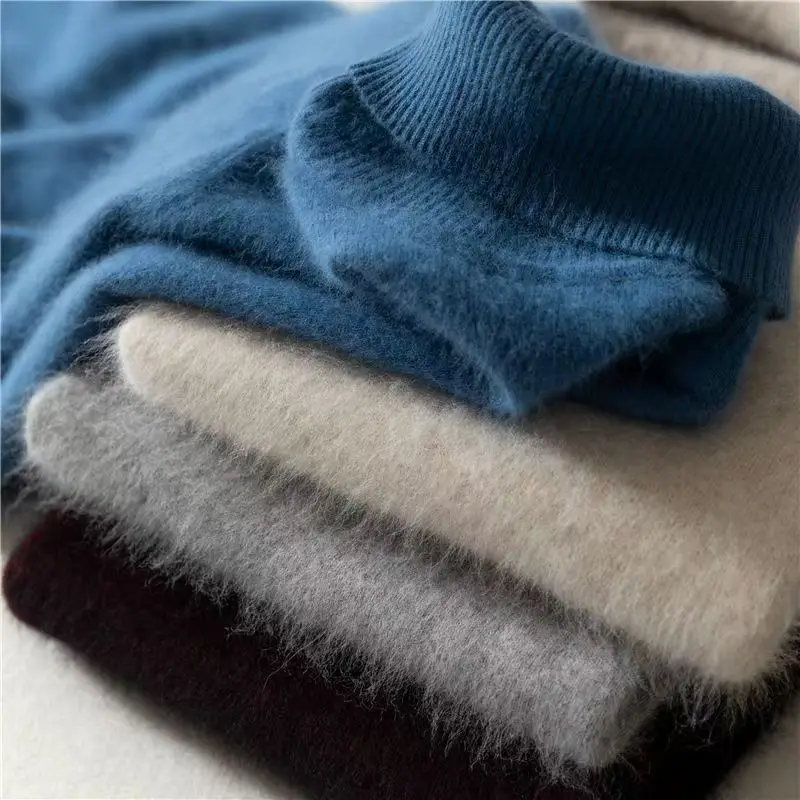
Creating effective transitional outfits requires strategic layering that balances warmth, comfort and style. The ultimate guide to layering cashmere cardigans reveals how thoughtful combinations can adapt to temperature changes throughout the day.
Foundation First: Begin with ultra-thin cashmere against your skin. A lightweight turtleneck or tee creates a smooth, temperature-regulating base that wicks moisture and prevents chilling. Choose neutral colors that won’t show through subsequent layers.
Mid-Layer Magic: This is where cashmere truly shines. A fine-gauge sweater or cardigan provides significant warmth without bulk. For maximum versatility:
* Select pieces with varying necklines to create different looks
* Consider both fitted and slightly oversized options for different styling effects
* Choose complementary colors that work together when layers are partially visible
Outer Layer Adaptability: Complete your layering strategy with pieces that can be easily removed or added:
* Longer cardigans or lightweight cashmere blazers offer polish with practicality
* Wraps and shawls provide dramatic flair while allowing air circulation
* Consider contrasting textures (like smooth cashmere under a textured knit) for visual interest
Texture Mixing Principles: Creating sophisticated layered looks involves thoughtful texture combinations:
* Pair ribbed cashmere with smooth varieties for subtle textural contrast
* Combine cashmere with complementary natural fibers like silk, fine cotton, or linen
* Use textural contrast to create visual depth even in monochromatic outfits
Color Coordination: For maximum versatility in a transitional wardrobe:
* Build around a core color palette where all pieces work together
* Use the rule of three – limit outfits to three main colors for cohesiveness
* Consider gradient layering, where colors move from light to dark from inside layers out
The beauty of thin cashmere layers lies in their adaptability – pieces can be added or removed throughout the day without creating bulky, uncomfortable outfits or compromising on elegance.
Seasonal Styling Guide: Thin Cashmere Through the Transitional Months
Early Spring Transitions
As winter reluctantly gives way to spring, thin cashmere provides the perfect bridge between seasons. This period demands flexible layering that accommodates rapidly shifting temperatures:
- Layer a thin cashmere turtleneck under a lightweight cardigan, topped with a transitional trench coat for brisk mornings
- Pair a fine-gauge cashmere sweater with straight-leg jeans and ankle boots for a polished casual look that adapts throughout the day
- Incorporate spring colors like soft greens, pale blues, and subtle lavenders to refresh winter-weary wardrobes
These combinations work beautifully for temperatures between 45-65°F (7-18°C), when the day might begin with frost but warm considerably by afternoon. The key is incorporating lightweight turtlenecks that can be revealed as outer layers are shed.
Late Spring to Summer Evenings
Even as days warm, thin cashmere remains relevant for temperature drops in evenings or unexpected cool fronts:
- A lightweight cashmere shawl provides perfect coverage for outdoor dining or evening walks
- Ultra-thin cashmere tees offer sun protection with breathability for windy coastal days
- Open-weave cashmere cardigans in pale colors create elegant cover for summer dresses when temperatures drop after sunset
The packability of thin cashmere makes it perfect for summer travel when temperature variations can catch you unprepared, taking minimal space in a day bag but providing considerable comfort when needed.
Early Fall Sophistication
As summer heat gradually yields to autumn crispness, thin cashmere helps navigate the sometimes dramatic temperature shifts:
- Layer a thin cashmere vest over a long-sleeve tee, adding a scarf that can be removed as the day warms
- Combine a lightweight cashmere sweater with cropped pants and loafers, carrying a wrap for cooler evenings
- Experiment with autumnal colors like burnished oranges, deep teals, and warm neutrals while maintaining breathable layers
These strategies accommodate the 55-75°F (13-24°C) range typical of early fall, when mornings might require significant warmth but afternoons remain quite mild. The transitional wardrobe mastery comes from selecting pieces that integrate across seasons.
Late Fall Layering
As temperatures continue to decline, thin cashmere layers can be combined for maximum warmth without bulk:
- Start with a cashmere turtleneck, add a lightweight sweater, and top with a cashmere cardigan for triple-layer warmth that remains elegant
- Incorporate cashmere accessories like thin gloves and scarves to protect extremities
- Consider tonal layering (multiple shades of the same color) for sophisticated depth that remains cohesive
These more complex layering strategies extend the wearability of thin cashmere into temperatures as low as 35°F (2°C) while maintaining freedom of movement and elegant proportions.
Curating Your Thin Cashmere Collection: Quality Considerations
Understanding quality markers ensures your investment in thin cashmere delivers both performance and longevity:
Weave and Ply Considerations: The terms that define truly “thin” cashmere include:
* Single-ply construction uses one thread of yarn, creating the lightest, most delicate pieces
* Two-ply provides slightly more structure while maintaining excellent drape
* Fine gauge (referring to knitting density) typically means 12-gauge or higher for transitional pieces
* Actual thickness generally falls below 2mm for truly lightweight pieces
Material Composition: Pure cashmere versus blends affects performance:
* 100% cashmere offers maximum temperature regulation and softness
* Small percentages of silk (5-10%) can enhance drape without compromising warmth
* Higher percentages of other fibers (wool, cotton) may reduce cost but also diminish cashmere’s natural benefits
Fit for Layering: Strategic sizing ensures comfortable layering:
* Base layers should fit close to the body without constriction
* Mid-layers need slight ease to accommodate underneath layers
* Outer pieces require more generous cut to fit comfortably over multiple layers
Quality Indicators: What distinguishes exceptional cashmere:
* Even stitching with consistent tension throughout the garment
* Minimal initial pilling during the “breaking in” period
* Clean finishing on seams and edges
* Soft hand-feel without excessive treatment (which can indicate lower quality fibers masked by chemical softeners)
True quality cashmere develops a beautiful patina over time, actually improving with proper care rather than deteriorating like lesser materials.
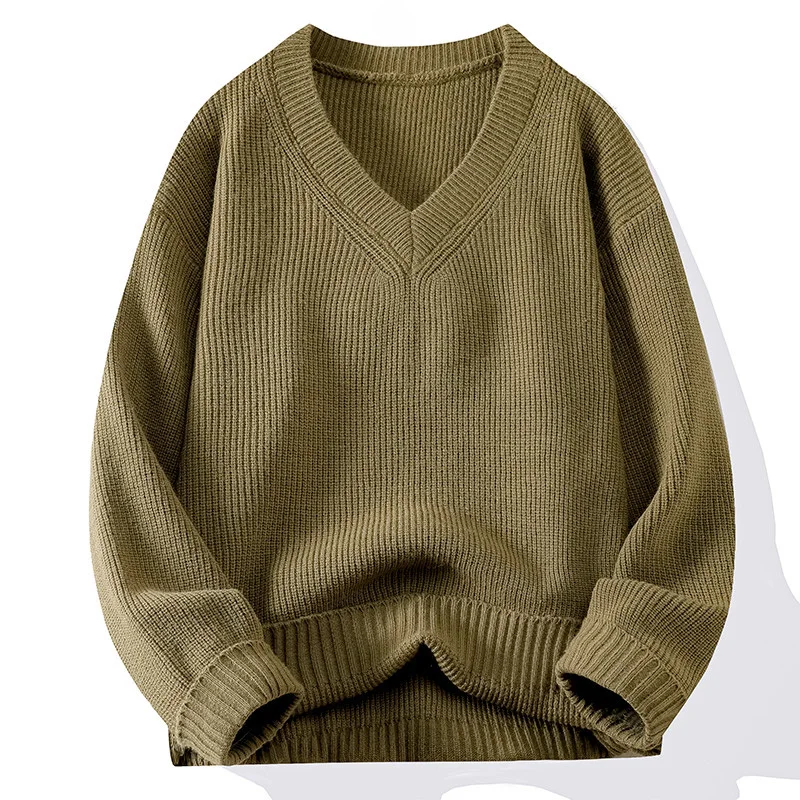
Expert Care Guide: Preserving Your Thin Cashmere Investments
Proper maintenance ensures your cashmere pieces remain beautiful across multiple transitional seasons:
Gentle Cleaning Approaches:
* Hand wash using lukewarm water (about 85°F/30°C) with specialty wool wash or mild shampoo
* Soak gently without rubbing or wringing
* For machine washing, use wool cycle with cold water and place items in mesh bags
* Limit washing to only when necessary – often airing out is sufficient between wears
Optimal Drying Techniques:
* Press (don’t wring) excess water out gently between clean towels
* Reshape the garment while damp to proper dimensions
* Dry flat on a clean towel away from direct heat or sunlight
* Never hang wet cashmere as it will stretch irreversibly
Seasonal Storage Solutions:
* Clean thoroughly before storing to prevent moth attraction
* Fold neatly with acid-free tissue between folds to prevent creasing
* Store in breathable cotton bags or boxes, never plastic
* Cedar blocks or lavender sachets serve as natural moth deterrents
Maintenance for Longevity:
* Remove pills gently using a cashmere comb or specialty fabric shaver
* Address any small holes immediately to prevent expansion
* Steam rather than iron to remove wrinkles (using lowest setting if ironing is necessary)
Proper care for short-sleeve cashmere sweaters and other thin pieces ensures they remain beautiful assets in your transitional wardrobe for many years, ultimately making them more sustainable and economical choices.
Essential Accessories: Complementing Your Cashmere Layers
The right accessories enhance both the function and style of your cashmere layers during transitional seasons:
Lightweight Cashmere Scarves:
* Provide crucial neck protection where temperature sensing is most acute
* Offer versatility through multiple tying methods: loose drape, single loop, multiple wraps
* Create color accents that can unite separate cashmere pieces into cohesive outfits
Protective Small Accessories:
* Thin cashmere beanies protect against heat loss without causing overheating
* Lightweight gloves shield extremities during morning chills while remaining elegant
* Cashmere-lined leather gloves combine weather protection with luxurious comfort
Complementary Non-Cashmere Pieces:
* Silk scarves layer beautifully with cashmere while adding pattern and color
* Leather belts define waistlines when layering multiple pieces
* Structured handbags provide counterpoint to the soft drape of cashmere layers
Cashmere vests deserve special mention as they bridge the gap between accessory and garment, adding crucial core warmth while leaving arms free for comfort during active transitional days.
Cashmere Wrap Sweaters, Women's Cashmere Pullovers
$75.89 Select options This product has multiple variants. The options may be chosen on the product pageCashmere Cable Knit Sweaters, Women's Cashmere Pullovers
Price range: $111.82 through $112.93 Select options This product has multiple variants. The options may be chosen on the product page- Price range: $171.47 through $181.33 Select options This product has multiple variants. The options may be chosen on the product page
Cropped Cashmere Sweaters, Women's Cashmere Pullovers
$155.77 Select options This product has multiple variants. The options may be chosen on the product page- Price range: $87.29 through $91.47 Select options This product has multiple variants. The options may be chosen on the product page
Oversized Cashmere Sweaters, Plus Size Cashmere Sweaters, Women's V-Neck Cashmere Sweaters
$136.87 Select options This product has multiple variants. The options may be chosen on the product page
Your Thin Cashmere Questions Answered

Is thin cashmere warm enough for genuinely cold weather?
Thin cashmere alone isn’t ideal for true winter conditions. However, its exceptional layering capacity makes it valuable within a cold-weather strategy. Multiple thin layers often provide better insulation than one thick layer, allowing for more temperature control as you move between environments.
Can thin cashmere be worn comfortably in summer?
Yes, in specific circumstances. Ultra-thin cashmere tees and tanks are comfortable in air-conditioned environments, while lightweight wraps are perfect for cool summer evenings. Cashmere’s breathability prevents overheating better than many synthetic alternatives.
How do I determine if thin cashmere is good quality?
Quality thin cashmere has a soft, almost buttery hand-feel without seeming overly treated. When held up to light, the knit should appear even and consistent. Good quality cashmere may initially shed slightly but shouldn’t pill excessively after proper washing. The bounce test—squeezing the fabric and watching how it recovers—reveals resilience in quality pieces.
What’s the optimal storage method between seasons?
Store clean, folded cashmere in breathable cotton bags or acid-free boxes with cedar elements to deter moths. Avoid plastic containers which can trap moisture and lead to mildew. Place heavier items at the bottom of storage piles to prevent crushing delicate pieces.
How often should thin cashmere pieces be washed?
Thin cashmere typically requires washing after 3-5 wears, though this varies with use intensity and exposure to body oils. Base layers may need more frequent washing, while outer pieces like cardigans can often be refreshed by airing overnight instead of washing after every wear.
Are cashmere blends better for transitional weather than pure cashmere?
It depends on the blend. Cashmere-silk blends offer excellent temperature regulation and enhanced drape, making them superb for transitional weather. Cashmere-cotton blends may provide better durability for frequent washing but might sacrifice some of cashmere’s natural temperature-regulating properties.
Creating a Sustainable Wardrobe with Timeless Cashmere Layers
Investing in quality cashmere layers represents a commitment to both personal comfort and environmental responsibility:
Longevity as Sustainability:
* Quality cashmere pieces often last 10+ years with proper care, compared to 1-2 seasons for fast fashion alternatives
* This extended lifespan significantly reduces the environmental impact per wear
* The biodegradability of natural cashmere fibers contrasts with synthetic materials that persist in the environment
Versatility Reduces Consumption:
* Multifunctional cashmere pieces that work across seasons reduce the total number of garments needed
* The layering potential of thin cashmere maximizes outfit combinations from fewer pieces
* Season-spanning colors and classic designs resist trend obsolescence
Timeless Design Elements:
* Clean lines and minimal embellishments ensure relevance across years
* Classic silhouettes avoid the rapid turnover of trend-driven styles
* Subtle neutral colors form the foundation of a lasting wardrobe, complemented by occasional seasonal hues
Building a thoughtful collection of cashmere essentials for your capsule wardrobe represents an approach to dressing that values quality over quantity. Estate Cloth’s commitment to exceptional materials and timeless design aligns perfectly with this philosophy, creating pieces that remain relevant and beautiful season after season, year after year.
By investing in versatile, high-quality cashmere layers, you not only experience unparalleled comfort during challenging transitional seasons but also embrace a more mindful approach to personal style—one based on lasting quality rather than constant consumption.

